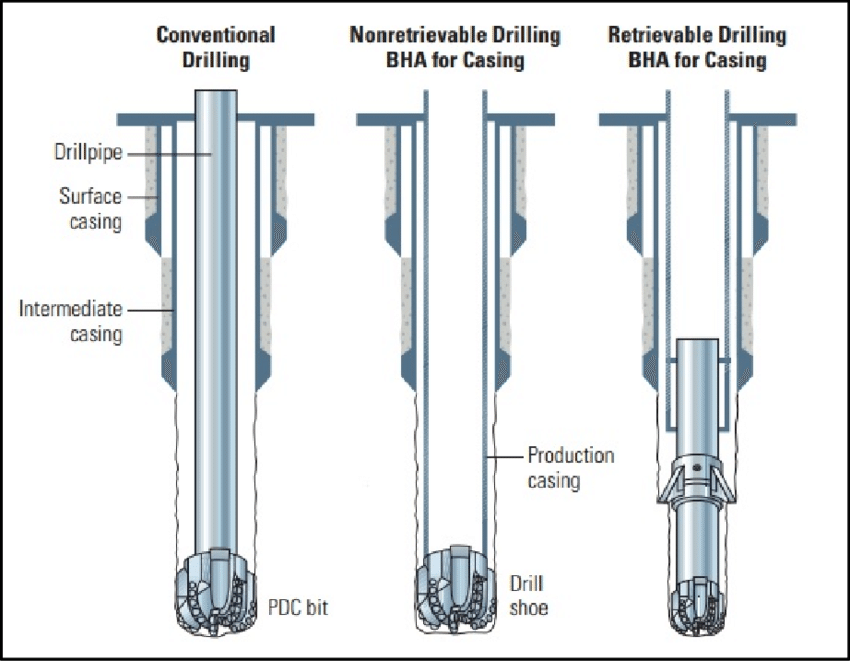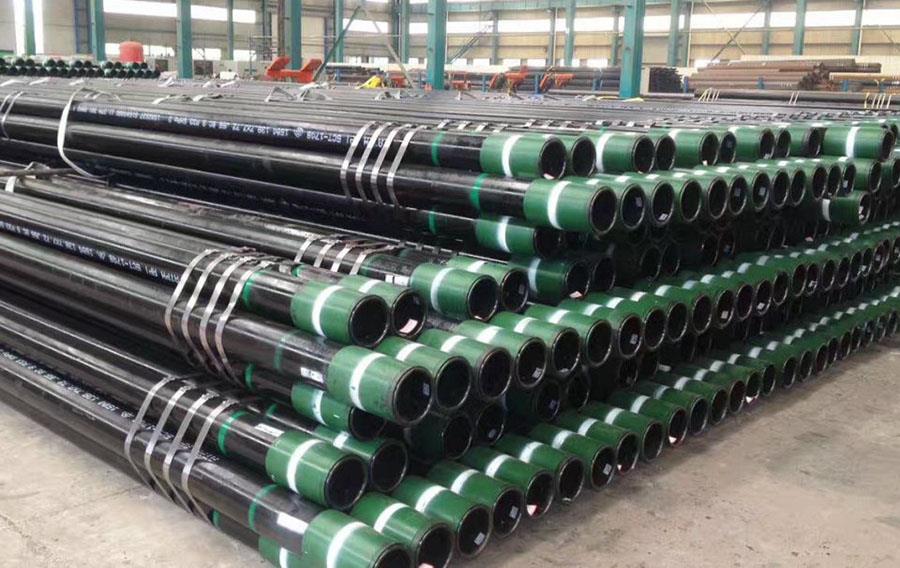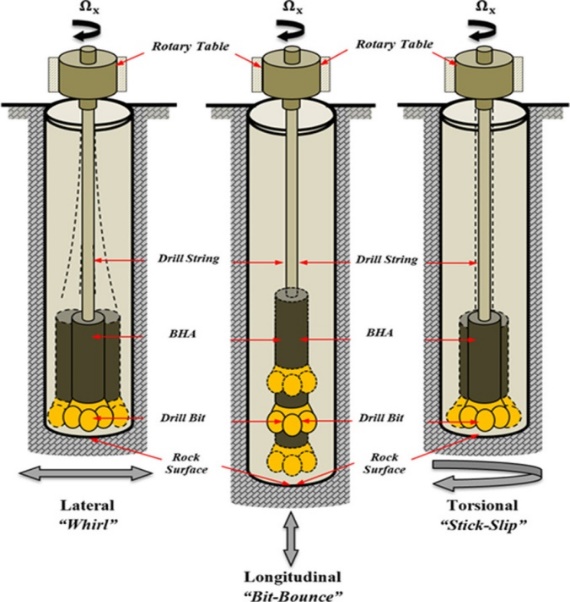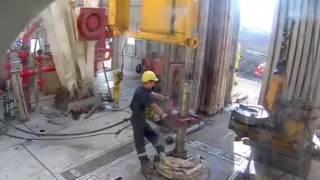Abstract
The purpose of the article is to describe visual context as one of the possible means of teaching technical translation. Using multimodal visual contexts, a student of technical translation is able to assimilate technical knowledge at the stage of pre-translation, which leads to understanding the content of a technical text and, as a result, to high-quality conscious translation. The work has stated that visual material is more efficiently classified in terms of its most important functions and in terms of its connection with the real world that it represents. Therefore, I proposed to take into account the following characteristics of the visual material: visual or verbal ways of presenting knowledge should be related in time and space; when choosing visual materials, excessive information should be avoided; dynamic phenomena are better represented through animation; highly interactive elements should be presented separately for beginners. Among these characteristics there are two main ones—iconicity and dynamism. The results of a comparative analysis of technical texts about the oil and gas industry showed that contexts are differentiated, taking into account two main characteristics of images, into the following types: static verbal-visual contexts with a low level of knowledge, static visual contexts with a low level of knowledge, dynamic verbal-visual contexts with a high level of knowledge, and dynamic visual contexts with a high level of knowledge.
Keywords: Context, technical text, technical translation, visual context
Introduction
In a foreign-language special communication, visualization of real technical objects plays an important role in assimilation of terminological vocabulary and, as a result, in acquisition of special knowledge, which together leads to the formation of technical translation skills. As a rule, recipients of specialized texts (non-experts in this field) extract knowledge from graphical data in the form of mental images. These images help them understand how technical objects are actually arranged, how complex mechanisms and systems, described in the text, function. In other words, visualization is a link between linguistic and graphical data in special texts.
Problem Statement
Graphical data structure and represent technical knowledge in a special text, but not all special texts provide information regarding conceptual objects, considering them from different points of view or situations. However, a beginner in technical translation, as a rule, needs much information on the topic in order to understand the context of a source text and translate it properly. Moreover, this causes a number of difficulties, because the meaning and place of a concept in the structure of technical knowledge or in the linguistic structure often vary depending on the context.
Thus, the relevance of the current research lies in the fact that I include contextual information in the process of teaching technical translation. At the same time, I consider this type of information as one of the resources for the representation of knowledge along with dictionaries, special reference books, encyclopedias, etc. The visual context, being one of the forms of technical knowledge representation, is aimed at simultaneously performing a number of tasks: obtaining new information about the phenomenon under study, teaching, unification of terminology, assimilation of acquired knowledge, etc. In other words, visual context is a kind of auxiliary tool in the work of a number of specialists: linguists, translators, terminologists, etc.
The reason of referring to this kind of context is that, usually, Lexicology and Term Theory study contexts in isolation. For the most part, they are selected according to syntactic criteria, with the exception of conceptual and pragmatic features (Bernolet et al., 2016; Diessel, 2015; Feiman & Snedeker, 2016; Tooley & Bock, 2014; Wittenberg et al., 2014; Yoon & Gries, 2016). In the structure of a special text, the terms and concepts cannot and should not be fixed statically, that is, isolated from contexts. To represent technical knowledge fully, multimodal contexts are needed that combine verbal and non-verbal information about phenomena, which are described using terms and concepts and within which the dynamic nature of terms is reflected (Darian, 2001). Thus, such contexts provide students with the ability to search for information with different levels of specificity. Using multimodal visual contexts, a student of technical translation is able to assimilate technical knowledge at the stage of pre-translation, which leads to understanding of the content of a technical text and, as a consequence, to high-quality conscious translation.
Research Questions
The following research questions are formulated in the study: 1) What are the selection criteria of the visual contexts for teaching technical translation? 2) At what stages of teaching technical translation can each type of visual context be applied?
Purpose of the Study
From there, the purpose of the article is to describe visual context as one of the methods of teaching technical translation.
This goal can be achieved by solving the following tasks: 1) to describe the context from the point of view of linguistics and Translation Theory; 2) to identify the criteria for the selection of visual contexts in order to further include them in the process of teaching technical translation, 3) to describe the selected types of visual contexts.
Research Methods
The following empirical research methods were used: scientometric analysis of scientific works on the topic under study; the method of direct and indirect description; the method of context analysis—when justifying selection of various types of context as a way of representing technical knowledge.
Research material
The research material was technical articles on oil and gas equipment, which were selected from journals available in the public domain (the total number of texts – 50, the total number of word usage – 520,000).
Findings
Knowledge representation
According to general dictionaries, representation has several meanings: 1) acting for: a person or organization that speaks, acts, or is present officially for someone else; 2) description: the way that someone or something is shown or described; 3) including all (Cambridge Dictionary, n.d.)
Since my research lies in the field of linguistics, I will consider the concept of representation as a linguistic one. Linguists have different views on this concept, e.g. some of them consider it within the framework of cognitive linguistics in the context of the study of mental processes that arise at the time of speech generation (Boldyrev, 2007; Larina, 2015; Ozherelyeva, 2019; Zabotkina, 2016); others study this concept within the framework of Representation Theory by Williams (2003) or experimental psychology (Anglin et al., 2004; Branigan & Pickering, 2017; Hagoort & Indefrey, 2014).
I believe that knowledge representation is closely related to the explanatory side of language, and thus the process of knowledge representation can be interpreted as an epistemological process. In this case, the representation will be carried out indirectly—with the help of various auxiliary means: symbols, signs, systems, artificial languages, etc. I include the visual context as such auxiliary means, since it accumulates the verbal and non-verbal means of technical knowledge representation in a concise form and can easily be subjected to various manipulations necessary when translating technical texts.
Thus, I consider representation as a kind of context within which technical knowledge is realized with the help of verbal and non-verbal means of language.
Visual context
In the broadest sense, knowledge is information that has become part of a certain context. In order to transform information into knowledge, a certain context carrying some meaning is needed, which, in turn, must be related to the existing experience. In this sense, visual context can be viewed as the experience that helps activate necessary meanings in the human mind.
Within the framework of cognitive science, images are regarded as one of the semiotic ways of representing a concept that facilitates the transfer of knowledge between LSP users. Consequently, from the standpoint of cognitive terminology, concepts can be represented in terms of a verbal form and a non-verbal form, depicted by non-linguistic signs (photographs, diagrams, etc.). This statement is especially true in relation to technical communication, where a large number of non-linguistic signs function and are used.
According to ISO 10241-1: 2011, images are deverbal terms (ISO, n.d.) that represent concepts in a way other than verbal description.
In the process of teaching technical translation, we strive to achieve consistency of verbal and non-verbal forms of representation of technical knowledge: images must correspond to the conceptual information presented in the definitions, and be verbalized when using terms in context. In fact, images define concepts by demonstrating definitions and thus complement the defining context. Such contexts help in building a mental image of the subject area and, thus, speed up the process of acquiring knowledge, therefore, studying a visual context can be considered as a means of learning and teaching.
The analysis of literature on this issue has shown that specialized language resources, such as technical texts, dictionaries, terminological bases, etc. should satisfy not only the communicative expectations of users, but also their cognitive expectations. They should provide adequate terminological units and an adequate amount of specialized knowledge. However, in most terminological resources, when terms are shown in context, it is most often a random sentence reflecting the syntactic properties and placement patterns of the input term.
Types of visual contexts
The role of images in scientific and technical texts has been considered in a number of studies (Cook, 2006; Dmitrichenkova & Dolzhich, 2017; Faber et al., 2007; Monterde, 2002; Prieto Velasco & Faber, 2012), thanks to which it becomes possible to determine the main characteristics of the images that I propose to use in the process of teaching technical translation.
Traditionally, images are classified according to their structure into categories such as photographs, drawings, animation, videos, diagrams, graphs, and representations (Monterde, 2002). However, given the tasks of teaching technical translation, it is more expedient to classify images in terms of their functions and connections with the objects of the real world that they represent.
Therefore, for teaching technical translation, I selected images that met the criteria that were highlighted in the studies by Cook (2006):
1) Different ways of representing knowledge (visual / verbal) should be linked in time and space.
2) Dynamic phenomena are better represented through animation.
3) For beginners, highly interactive elements should be presented separately.
4) Redundant information should be avoided when choosing visual materials.
Thus, iconicity and dynamism are the main characteristics that visual materials included in the process of teaching technical translation should have. Iconicity refers to the representation of objects in the real world through the abstraction of conceptual attributes; dynamism refers to the representation of motion—either through explicit movement (e.g. video and animation) or by illustrating steps that make up a process (e.g. images showing different phases in a process).
Iconicity is especially effective in the process of representing hierarchical and non-hierarchical relationships. Abstraction increases communication efficiency and makes it easier to understand more complex subject-oriented relationships. Dynamism emphasizes the procedural nature of concepts. These considerations are fundamental to the choice of visual information for the presentation of terms and concepts in the process of teaching technical translation. They are justified because one of the goals of teaching technical translation is to harmonize conceptual, linguistic, and graphical information as much as possible, which ensures a consistent presentation of knowledge and, as a result, improves the quality of translation.
The characteristics of images are closely related to the degree of specialization of the text in which they appear and the type of concept they represent. More abstract and less iconic images tend to appear more often in highly specialized texts, while iconic images appear more often in popular science texts.
According to some researchers, whom I have mentioned in one of my articles (Fedyuchenko, 2020), contexts with a low level of knowledge (knowledge-poor contexts—KPC) and contexts with a high level of knowledge (knowledge-rich contexts—KRC) are distinguished. Contexts with a low level of knowledge do not contain elements of domain knowledge associated with the search word. Contexts with a high level of knowledge include at least one element of the subject area of knowledge, which is necessary for conceptual analysis of the search word.
Applying this distinction and taking into account the two main characteristics of images (iconicity and dynamism), as well as the presence / absence of verbal context, I propose to distinguish between the following types of visual contexts:
1) Static verbal-visual contexts with a low level of knowledge.
2) Static visual contexts with a low level of knowledge.
3) Dynamic verbal-visual contexts with a high level of knowledge.
4) Dynamic visual contexts with a high level of knowledge.

The visual context of the term ‘casing’ (Figure 1) is an example of a, for the following reasons. 1) The verbal part of the context is represented mainly by nouns and nominative phrases: that represent the concept in statics and give only basic knowledge, without displaying its connection with other concepts and expressing its functions. 2) The image is schematic; the real object is not displayed on it. The term ‘casing’ is one of the general technical terms that are acquired by non-specialists at the first stage of acquaintance with the subject area; therefore, this type of context is quite suitable for acquiring primary technical knowledge.

belongs to the category of photographs, it does not reflect the object in dynamics, and provides no verbal context (figure 2). This type of context is additional to the previous type, and it makes sense to present it when a student has already developed a primary elementary technical picture of the world.

has the following main characteristics. 1) An object is depicted as part of a system (Figure 3 shows a drill string inside a rotor of a drilling rig; images of a drill bit and a lower part of the drill string (BHA) are signed separately). 2) An image contains arrows indicating the direction of movement. 3) The verbally dynamic character is manifested in the use of verbs and verbal forms, which indicate the functions that the given object performs.

has the following distinctive characteristics. 1) A realistic image (photo or video), it represents the concepts and their relationships with a high level of abstraction. 2) Display of an object happens in dynamics (dynamism in photographs can be traced in the display of specialists performing certain manipulations with the described object). Contexts of this type are necessary at the stage of mastering highly specialized terms, when a non-expert in a certain subject area of knowledge has already a developed primary technical picture of the world, from which he/she can extract general technical concepts (figure 4).
Conclusion
Thus, the types of visual contexts described above allow students of technical translation, first, to structure the obtained declarative knowledge by studying the dynamic system of concepts of the subject area of knowledge; second, to visually represent connection between declarative and procedural knowledge.
The assimilation of general technical terms in specialized knowledge structures is associated with images: as such, they reflect a wider set of generic and associative understandable relations specific to the subject area. In this case, the iconic image is most appropriate, taking into consideration that images of this type depict shapes, colors, proportions, sizes, etc. of an object.
The assimilation of highly specialized terms occurs already based on general technical terms, when the primary technical picture of the world is developed. Consequently, a different visual context is required to represent these terms. Visual dynamic contexts, representing an imitation of a certain real mechanical system with all its components, reflect connections of the components of this system, which helps to build and activate the corresponding mental structures in the student's brain when viewing this visual context. It further allows formulating a specific systematic strategy for translating a technical text and avoiding factual and semantic errors in translations.
References
Anglin, G., Vaez, H., & Cunningham, K. (2004). Visual representations and learning: The role of static and animated graphics. In D. Jonassen (Eds.), Handbook of research on educational communications and technology (pp. 755–794). Lawrence Erlbaum.
Bernolet, S., Collina, S., & Hartsuiker, R. J. (2016). The persistence of syntactic priming revisited. Journal of Memory and Language, 91, 99–116.
Boldyrev, N. N. (2007). Reprezentaciya znaniy v sisteme yazyka [Knowledge Representation in language system]. Cognitive Linguistics, 4(013), 17–27.
Branigan, Holly, P., & Pickering, Martin J. (2017). An experimental approach to linguistic representation. Behavioral and Brain Sciences, 40, 1-61. DOI:
Cambridge Dictionary. (n.d.). Representation. In Dictionary.cmabridge.org. Retrieved on March 03, 2021, from https://dictionary.cambridge.org/ru/%D1%81%D0%BB%D0%BE%D0%B2%D0% B0%D1%80%D1%8C/
Cook, M. P. (2006). Visual Representations in Science Education: The Influence of Prior Knowledge and Cognitive Load Theory on Instructional Design Principles. Science Education, 90, 1073–1091.
Darian, S. (2001). More than meets the eye: The role of visuals in science textbooks. LSP & Professional Communication, 1(1), 10–36.
Diessel, H. (2015). Usage-based construction grammar. In: Handbook of cognitive linguistics, ed. E. Da˛ browska and D. Divjak (pp. 295–321). De Gruyter.
Dmitrichenkova, S. V., & Dolzhich, E. A. (2017). Visual components of scientific-technical texts. Procedia Computer Science, 103, 584–588.
Faber, P., León Araúz, P., Prieto Velasco, J. A., & Reimerink, A. (2007). Linking images and words: The description of specialized concepts. International Journal of Lexicography, 20(1), 39–65.
Fedyuchenko, L. G. (2020). Vizualnyy kontekst kak forma reprezentacii tehnicheskogo znaniya [Visual context as a form of technical knowledge representation]. Philology. Theory & Practice, 13(1), 324-329. DOI: 10.30853/filnauki.2020.1.65
Feiman, R., & Snedeker, J. (2016). The logic in language: How all quantifiers are alike, but each quantifier is different. Cognitive Psychology, 87, 29–52. DOI: 10.1016/j.cogpsych.2016.04.002
Hagoort, P., & Indefrey, P. (2014). The neurobiology of language beyond single words. Annual Review of Neuroscience, 37(1), 347–62. DOI:
ISO 10241-1: 2011. Terminological entries in standards — Part 1: General requirements and examples of presentation. Retrieved on March 03, 2021, from https://www.iso.org/standard/40362.html
Larina, T. Yu. (2015). Reprezentaciya znaniy i kognitivnoe prostranstvo hudozhestvennogo teksta [Knowledge representation and cognitive space of a literary text]. Simvol Nauki, 3, 139-143.
Monterde, R., & Ana, M. (2002). Relationship and dependency between linguistic and non-linguistic forms of concept representation: A study of texts and addressed to experts and students. LSP and Professional Communication, 2(2), 31–48.
Ozherelyeva, T. A. (2019). Kognitivnaya reprezentaciya [Cognitive representation]. ITNOU: informacionnye tehnologii v nauke, obrazovanii i upravlenii, 3, 9-16.
Prieto Velasco, J. A., & Faber, P. (2012). Graphical information. In P. Faber (Ed.), A cognitive linguistics view of terminology and specialized language (pp. 225–248). De Gruyter Mouton.
Tooley, K. M., & Bock, K. (2014). On the parity of structural persistence in language production and comprehension. Cognition, 132(2), 101–36. DOI: 10.1016/j.cognition.2014.04.002
Williams, Edwin S. (2003). Representation Theory. MIT Press.
Wittenberg, E., Jackendoff, R., Kuperberg, G., Paczynski, M., Snedeker, J., & Wiese, H. (2014) The processing and representation of light verb constructions. In A. Bachrach, I. Roy, & L. Stockall (Eds.), Structuring the argument (pp. 61–80). John Benjamins.
Yoon, J., & Gries, S. Th. (Eds.). (2016). Corpus-based approaches to construction grammar. John Benjamins.
Zabotkina, V. I. (2016). Reprezentaciya sobytiy v mentalnyh modelyah i diskurse [Representation of events in mental models and discourse]. Vestnik of Moscow State Linguistic University, 7(746), 66-74.
Copyright information

This work is licensed under a Creative Commons Attribution-NonCommercial-NoDerivatives 4.0 International License.
About this article
Publication Date
02 December 2021
Article Doi
eBook ISBN
978-1-80296-117-1
Publisher
European Publisher
Volume
118
Print ISBN (optional)
-
Edition Number
1st Edition
Pages
1-954
Subjects
Linguistics, cognitive linguistics, education technology, linguistic conceptology, translation
Cite this article as:
Fedyuchenko, L. (2021). Visual Context As A Means Of Teaching Technical Translation. In O. Kolmakova, O. Boginskaya, & S. Grichin (Eds.), Language and Technology in the Interdisciplinary Paradigm, vol 118. European Proceedings of Social and Behavioural Sciences (pp. 188-196). European Publisher. https://doi.org/10.15405/epsbs.2021.12.24

